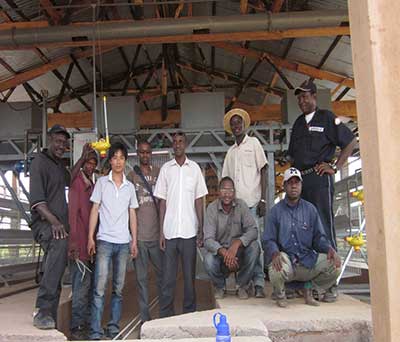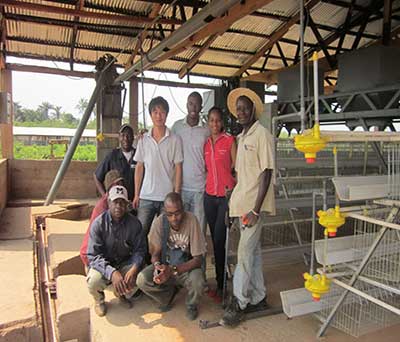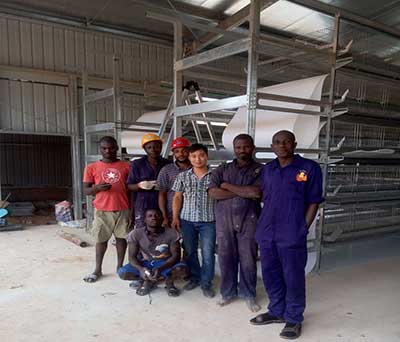Raising chickens can be a rewarding and fulfilling experience, but it requires proper equipment to ensure the health and productivity of your flock. One essential piece of equipment is a chicken layer cage, which provides a comfortable and safe environment for your chickens to lay eggs. With so many options for chicken layer cages for sale, it can be overwhelming to choose the best one for your needs. In this guide, we will provide you with all the information you need to make an informed decision.
Size and Design of Chicken Layer Cages
When it comes to choosing a chicken layer cage, size and design are important factors to consider. A chicken layer cage should provide enough space for each chicken to move around comfortably, stretch their wings, and lay eggs. As a general rule, each chicken should have a minimum of 1.5 square feet of space in the cage. However, the exact space required will depend on the breed and size of your chickens.
Another important consideration is the design of the chicken layer cage. A well-designed cage will allow for easy access to the eggs and the birds, making it easier for you to clean and maintain the cage. Look for cages that have removable trays for easy cleaning and nesting boxes that can be easily accessed.
You can choose from various types of chicken layer cages, such as A-type cages, H-type cages, and vertical layer cages. A-type cages are designed in a vertical system, with a sloping floor and a trough for feed and water. They are easy to clean and maintain, making them a popular choice for backyard farmers. H-type cages are stacked horizontally, with each cage connected to the next. They are ideal for commercial egg production and can accommodate a large number of birds in a small area. Vertical layer cages are multi-tiered cages that allow for maximum use of space. They are a popular choice for commercial farms and can house a large number of birds.

Material of Chicken Layer Cages
The material of the chicken layer cage is also an important consideration. The most common materials used for chicken layer cages are wood, metal, and plastic. Each material has its own advantages and disadvantages.
Wooden chicken layer cages are a popular choice because they are durable and provide good insulation, keeping the chickens warm in colder weather. However, they can be difficult to clean and may harbor bacteria and parasites.
Metal chicken layer cages are strong and durable, making them a good choice for outdoor use. They are also easy to clean and disinfect. However, they can be expensive and may not provide adequate insulation in colder weather.
Plastic chicken layer cages are lightweight and easy to clean, making them a good choice for indoor use. They are also less expensive than metal cages. However, they may not be as durable as other materials and may not provide adequate insulation in colder weather.
Number of Tiers in Chicken Layer Cages
Chicken layer cages come in various numbers of tiers, which refers to the number of levels in the cage. The number of tiers you choose will depend on the size of your flock and the amount of space you have available. Single-tier cages are ideal for smaller flocks, while multi-tier cages are better suited for larger flocks.
When choosing a multi-tier chicken layer cage, it’s important to ensure that each tier has adequate space for the chickens to move around and lay eggs. It’s also important to consider the height of the cage, as chickens need sufficient headroom to prevent injury and stress.

Ventilation and Lighting
Proper ventilation and lighting are important factors to consider when choosing a chicken layer cage. Good ventilation is necessary to keep the air inside the cage fresh and clean, which can help prevent respiratory diseases and other health issues. Look for cages that have vents or windows that allow for proper airflow.
Lighting is also an important consideration, as it can affect the egg-laying patterns of your chickens. Chickens need at least 14 hours of light per day to lay eggs consistently. If you live in an area with long, dark winters, you may need to provide additional lighting to keep your chickens laying eggs year-round.
Cost of Chicken Layer Cages
The cost of chicken layer cages can vary widely, depending on the size, design, material, and number of tiers. It’s important to consider your budget when choosing a chicken layer cage, but it’s also important to remember that a quality cage is a long-term investment.
A well-designed and well-built chicken layer cage can last for many years, providing a safe and comfortable environment for your chickens to lay eggs. Look for cages that are made from high-quality materials and that are designed to withstand the wear and tear of daily use.
Where to Buy Chicken Layer Cages
There are many places to buy chicken layer cages, including online retailers, farm supply stores, and local breeders. When buying a chicken layer cage, it’s important to choose a reputable seller who offers high-quality cages and good customer service.
Before making a purchase, do some research on the seller and read customer reviews to ensure that you are getting a quality product. You may also want to consider the seller’s return policy and warranty.
In conclusion, choosing the best chicken layer cage for your needs requires careful consideration of several factors, including size, design, material, number of tiers, ventilation, lighting, and cost. By taking the time to research your options and choose a quality product, you can provide your chickens with a safe and comfortable environment to lay eggs, which can lead to a more productive and rewarding experience for you as a backyard farmer or commercial egg producer.








